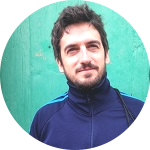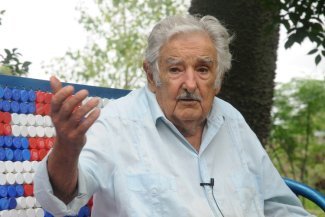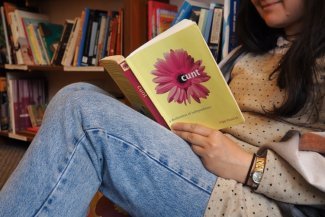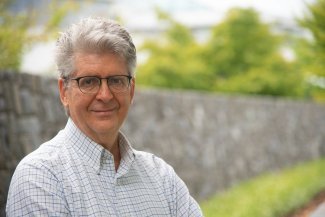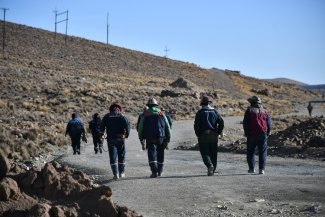Public libraries are both a temple of knowledge and critical thinking, as well as a refuge from cold weather, violence and loneliness. Pictured here, a space in Oodi library, Finland.
In his book Palaces for the People, sociologist Eric Klinenberg writes that the library is one of the most important pieces of social infrastructure that we have, as well as one of our most undervalued. Founded on the principle that everyone deserves free and open access to our common cultural heritage, the library, as Klinenberg argues, flies in the face of the dominant consumer capital logic of our age.
Public libraries are both a temple of knowledge and critical thinking, as well as a refuge from cold weather, violence and loneliness. Below, the heads of seven important libraries located in cities across Europe, the Americas and Asia detail their projects and give us reasons to celebrate what may well be the eighth wonder of the world: a true house of the people.
Oodi Library, Helsinki, Finland
Seventy employees. Most-read authors: Satu Rämö, Miranda Cowley Heller and Meri Valkama. Equal Times speaks with librarian Harri Annala.
“When we started planning the new central library, we didn’t approach it with any pre-conceived notions. We tried to start from a blank slate. We commissioned reports from consultants, travelled to learn about best practices at other libraries and brainstormed ideas. Most importantly, however, we engaged with the public. What was interesting was how few suggestions people had about the actual collection. What they mostly talked about was the space itself, what you can do in it and what kind of atmosphere to create.”
The result was the ambitious and sprawling Oodi libray, spread across three floors: “The first floor has a restaurant, a cinema and a multi-purpose room. Its walls serve as screens where the public can project digital art. The second story is dedicated to learning and has a workshop with 3D printers, vinyl cutters or an embroidery machine; nine audio recording and video editing studios, and a room with professional tools [a welding station, a laser cutter and a UV printer, to name a few]. Finally, the third floor is an open space with bookshelves, living trees and a cloud-shaped ceiling”.
When asked about this unique approach to a library space, Annala has this to say: “At Oodi we work to make people active members of society by promoting programmes that emphasise democracy, freedom of expression and social concerns. We want the public to actively use these spaces, organise events and share their knowledge with one another. The important thing is what we do, not how we do it. A lot of individuals and small groups have important things to contribute but may not have the means to raise awareness. That’s where we can help”.
Delhi Public Library, India
Seventeen employees. Most read authors: Munshi Premchand, S. Vivekananda and Paula Hawkins. We are joined by director R. K. Sharma.
Established in 1951 as a pilot project sponsored by UNESCO and the government of India, the Delhi Public Library (DPL) grew from a small library in old Delhi to one of the country’s premier library systems. “It consists of a central branch and multiple satellite branches, including the libraries in the resettlement colonies and the Braille library,” all of which provide free services to everyone regardless of gender, caste or religion.
“On a day-to-day basis, users are becoming dependent on online resources and access to information, which leads to a decrease in people reading physical media. As a result, we have a real need for digital and information literacy. Unfortunately, our staff are also under a lot of pressure due to insufficient funds and employees. User expectations are too high and resources are insufficient.”
Despite these shortcomings, “the DPL acts as a community centre with book discussions, conferences, speech competitions and mobile library services for rural areas.”
Vancouver Public Library, Canada
Eight hundred employees. Most read authors: Robin Wall Kimmerer and Malcolm Gladwell.
We are speaking with Scott Fraser, manager of marketing and communications.
“The Vancouver Public Library (VPL) plays an important role in supporting diversity and inclusion in our city. This includes literacy for children and seniors, support for IBPOC [Indigenous, Black, and People of Colour] and LGBTIQ2+ [the ‘2’ stands for ‘two spirits,” a term used by Indigenous North Americans] communities and awareness of Indigenous Peoples’ history and cultures. With people housed in increasingly small spaces, the VPL is also a place to gather without the pressure of consumption.”
According to Fraser, Vancouver residents “hope that the library will alleviate the effects of social isolation, which were aggravated by the pandemic, and that it will be prepared to support the public in the event of a weather emergency. In addition, the VPL has removed barriers to library use by eliminating late fees, as these most affect people facing financial difficulties”.
In addition to this social support, Fraser highlights two services that the VPL provides: “Musical instrument loans, a collection of more than 100 instruments that users can take for free, and the Inspiration Lab, a space dedicated to digital creativity, collaboration and storytelling.”
Biblioteca Central de México, Mexico City
Two hundred and forty-three employees. Most read books: Algebra and Arithmetic by Aurelio Baldor, One Hundred Years of Solitude by Gabriel Garcia Marquez and Aura by Carlos Fuentes.
We speak with director José M. Leyva.
The Biblioteca Central has two sites, La Ciudadela and Buenavista, “both with different architectural characteristics, collections and services. One is historical and the other contemporary, the perfect balance. These are the most democratic spaces in the city, where students, housewives, workers and children can find an inexhaustible source of knowledge. It is a ‘civilising’ institution in the deteriorating urban areas where they are located”.
“Our most basic project is also our most innovative: our reading programme, where we introduce children to their first books and support young people in awakening their curiosity to learn about the world. We also provide books on tape for those who can hear but cannot see, and public access to historical books that belonged to influential people in the cultural life of the country.”
After the closures caused by the pandemic, “many people realised that they could find information on the internet. I think as librarians our job going forward will increasingly be to teach people skills to better critically assess the information they find online. The future will be a hybrid model where personal interaction will coexist with technology. E-books will by no means displace paper books because paper books will still be accessible when the network fails.”
Los Angeles Public Library, USA
One thousand, one hundred and forty-three employees. Most read authors: James Patterson, Stephen King and Danielle Steel. In 1986, the Central Library in Downtown Los Angeles suffered a fire that destroyed a million books. Journalist Susan Orlean details the tragedy in The Library Book: “You can still smell the smoke in some of the books.”
Directors K. Malone and J. Brown were interviewed for this article.
“Orlean’s book renewed interest in our library and the tragic events that led to our rebuilding and expansion. The result was that we gained more patrons and visitors. Our docents continue to receive requests for specialised tours highlighting the book and the fire.”
Beyond their history, “our libraries serve as spaces of engagement. One of the ways we reinforce democratic values is with Banned Books Week, an annual event that celebrates the freedom to read. In addition, we have programmes like the Source, which provides aid to homeless Angelenos; the New Americans, which provides resources for immigrants, and ADA Services for people with disabilities. These programmes help us to reach people and connect them with the resources they need.”
Ignasi Iglésias-Can Fabra, Barcelona, Spain
Nineteen workers. Most read authors: Irene Solà, Juan Gómez-Jurado, Dolores Redondo.
We speak with Gemma Domingo, director.
This public library was founded in 1935 at a different location. In its early years, it survived the Spanish Civil War. As librarian Francesca Farró wrote in her diary in February 1937: “The bombs don’t scare anyone, the reading rooms are still busy.” The library continued on even after Franco’s regime removed all of the books in Catalan. In 2002, it moved to its current location, a former yarn factory that provided work for half the area and was converted into a library at the request of the neighbourhood.
One of Can Fabra’s specialisations is the American Space, which focuses on North American culture. “In the 1960s, libraries were study rooms and storage spaces for books, but now we carry out 1,000 cultural activities a year. We are a living space that fosters critical thinking and provides support to vulnerable people. This makes us the second most valued municipal service after the fire brigade.”
“However, we have two challenges for the future: expanding the 3,700 square metres in order to integrate more workshops and getting more young people interested in the library”.
Biblioteca Piloto de Medellín, Colombia
Sixty-eight employees. Most read authors: Gabriel García Márquez, Mario Mendoza and Piedad Bonnett.
Deputy director Carlos A. Montoya speaks with us.
“Our aim is to give meaning to each of the collections and to facilitate the connection between knowledge, heritage and history for the new generations, something which often makes us a bridge between multiple eras. To this end, the Piloto works to be a living centre of information, thought and knowledge, to be custodians of the memory of Medellín, Antioquia and the whole of Colombia through the material we have collected over decades, which has now become our heritage; to be a laboratory for experimentation in literature, writing and speech, and to have a social and cultural impact beyond the walls of the library..
The Piloto library also provides a space for meeting and dialogue “which has made it into a safe and neutral space recognised by the community for armed actors. Our library participated in strengthening the Bibliotecas Populares y Comunitarias, which are located in areas marked by violence and lack of opportunities.”
Finally: “If we look to the future, this library constituted in Barrio Carlos E. Restrepo is committed to being a pioneer in the region in accordance with the strategic lines set out by UNESCO, which sponsored our project in 1952, as it had previously with the Delhi library.”



